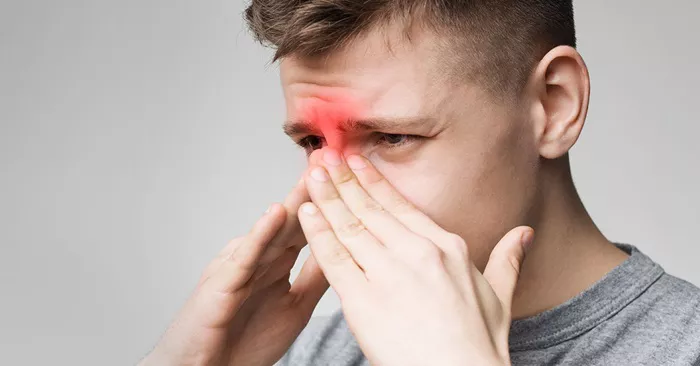Sinus pressure is a common ailment that affects millions of people worldwide, leading to discomfort and impacting daily activities. Understanding the underlying causes of sinus pressure is crucial for effective management and relief. This article delves into the various factors that contribute to sinus pressure, exploring both common and less-known causes.
Anatomy of the Sinuses
To understand sinus pressure, it’s essential to have a basic knowledge of the sinus anatomy. The sinuses are air-filled cavities located within the bones of the face and skull. There are four pairs of sinuses:
Maxillary Sinuses: Located in the cheekbones.
Frontal Sinuses: Situated in the forehead.
Ethmoid Sinuses: Found between the eyes.
Sphenoid Sinuses: Located behind the nose and eyes.
These sinuses produce mucus, which drains into the nasal passages. When these drainage pathways are blocked, it can lead to the buildup of mucus and result in sinus pressure.
Common Causes of Sinus Pressure
Several common conditions can lead to sinus pressure, often related to infections, allergies, or anatomical issues.
Sinusitis
Sinusitis, also known as a sinus infection, is one of the primary causes of sinus pressure. Sinusitis can be acute or chronic:
Acute Sinusitis: Typically caused by viral infections, such as the common cold. It can also result from bacterial infections and usually lasts less than four weeks.
Chronic Sinusitis: Lasts for 12 weeks or longer and can be caused by ongoing infections, allergies, or structural issues.
Symptoms of Sinusitis
Symptoms of sinusitis include nasal congestion, thick nasal discharge, reduced sense of smell, facial pain or pressure, and headaches. Acute sinusitis may also be accompanied by fever.
Allergic Rhinitis
Allergic rhinitis, commonly known as hay fever, occurs when the immune system overreacts to allergens such as pollen, dust mites, pet dander, and mold. This reaction causes inflammation and swelling of the nasal passages and sinuses, leading to sinus pressure.
Common Allergens
Pollen: From trees, grass, and weeds.
Dust Mites: Microscopic organisms that thrive in household dust.
Pet Dander: Tiny flakes of skin shed by cats, dogs, and other animals.
Mold: Fungi that grow in damp, warm environments.
Nasal Polyps
Nasal polyps are noncancerous growths that develop on the lining of the nasal passages or sinuses due to chronic inflammation. They can obstruct nasal airflow and sinus drainage, leading to sinus pressure and recurrent sinus infections.
Deviated Septum
A deviated septum occurs when the thin wall between the nasal passages (septum) is displaced to one side. This can block one side of the nose, reducing airflow and causing difficulty breathing, nasal congestion, and sinus pressure.
Common Causes of Deviated Septum
Congenital: Present from birth.
Injury: Resulting from trauma to the nose.
Age-related Changes: Gradual shifting of the septum over time.
Other Causes of Sinus Pressure
Beyond the common causes, several other factors can contribute to sinus pressure.
Respiratory Infections
Respiratory infections, such as the common cold and influenza, can lead to inflammation and swelling of the nasal passages and sinuses. This inflammation can block sinus drainage pathways, resulting in sinus pressure.
Environmental Irritants
Exposure to environmental irritants, such as cigarette smoke, air pollution, strong odors, and chemical fumes, can irritate the nasal passages and sinuses. This irritation can cause inflammation and contribute to sinus pressure.
Barometric Pressure Changes
Changes in barometric pressure, often associated with weather changes, can affect the pressure within the sinuses. Rapid changes in altitude, such as flying or diving, can also lead to sinus pressure due to the inability of the sinuses to equalize pressure efficiently.
Swimming and Diving
Swimming and diving can introduce water into the nasal passages and sinuses, leading to irritation and inflammation. Chlorine in swimming pools can be particularly irritating. Additionally, the pressure changes during diving can cause sinus barotrauma, a condition where the pressure difference between the sinuses and the surrounding environment leads to pain and pressure.
Underlying Health Conditions
Certain health conditions can predispose individuals to sinus pressure.
Asthma
Asthma is a chronic respiratory condition characterized by airway inflammation and hyperresponsiveness. Individuals with asthma are more likely to have chronic sinusitis and nasal polyps, contributing to sinus pressure.
Cystic Fibrosis
Cystic fibrosis is a genetic disorder that affects the production of mucus, leading to thick and sticky mucus that can obstruct the sinuses and respiratory passages. This obstruction can cause chronic sinusitis and sinus pressure.
Immune System Disorders
Immune system disorders, such as immunodeficiency conditions, can impair the body’s ability to fight infections. This can lead to recurrent sinus infections and chronic sinus pressure.
Symptoms and Diagnosis
Identifying the symptoms and accurately diagnosing the underlying cause of sinus pressure is crucial for effective treatment.
Common Symptoms of Sinus Pressure
Facial Pain and Pressure: Often felt around the eyes, forehead, and cheeks.
Nasal Congestion: Difficulty breathing through the nose.
Thick Nasal Discharge: May be yellow or green.
Reduced Sense of Smell and Taste: Due to blocked nasal passages.
Headache: Particularly in the forehead or around the eyes.
Ear Pain or Fullness: Resulting from blocked Eustachian tubes.
Fatigue: Due to the body’s response to infection or inflammation.
Diagnostic Methods
Diagnosis of sinus pressure and its underlying cause typically involves:
Medical History: Discussing symptoms, duration, and any potential triggers.
Physical Examination: Checking for signs of nasal obstruction, inflammation, and tenderness in the sinus areas.
Nasal Endoscopy: Using a thin, flexible tube with a camera to view the nasal passages and sinuses.
Imaging Studies: CT scans or MRI to visualize the sinuses and detect any structural abnormalities or blockages.
Allergy Testing: Identifying specific allergens responsible for allergic rhinitis.
Treatment Options
Effective treatment of sinus pressure depends on the underlying cause.
Medications
Decongestants: Help reduce nasal congestion and improve sinus drainage. Available in oral or nasal spray forms.
Antihistamines: Used to treat allergic rhinitis by blocking the effects of histamine, reducing inflammation and congestion.
Nasal Corticosteroids: Reduce inflammation in the nasal passages and sinuses.
Antibiotics: Prescribed for bacterial sinus infections. Not effective for viral infections.
Pain Relievers: Over-the-counter medications like ibuprofen or acetaminophen to alleviate pain and discomfort.
Home Remedies
Saline Nasal Irrigation: Rinsing the nasal passages with a saline solution to clear mucus and allergens.
Steam Inhalation: Breathing in steam to moisten and loosen mucus in the nasal passages.
Warm Compresses: Applying warm compresses to the face to relieve pain and pressure.
Hydration: Drinking plenty of fluids to thin mucus.
Surgical Interventions
For chronic or severe cases where medications and home remedies are ineffective, surgical options may be considered:
Functional Endoscopic Sinus Surgery (FESS): Minimally invasive procedure to remove blockages and improve sinus drainage.
Balloon Sinuplasty: Using a balloon to dilate and open blocked sinus passages.
Septoplasty: Correcting a deviated septum to improve airflow and sinus drainage.
Polypectomy: Removing nasal polyps that obstruct sinus drainage.
Preventive Measures
Taking steps to prevent sinus pressure can help reduce the frequency and severity of episodes.
Avoiding Triggers
Manage Allergies: Using allergy medications and avoiding known allergens.
Avoiding Irritants: Steering clear of cigarette smoke, strong odors, and pollution.
Humidifying the Air: Using a humidifier to keep indoor air moist and prevent nasal dryness.
Maintaining Good Hygiene
Regular Handwashing: To reduce the risk of respiratory infections.
Using Saline Nasal Sprays: To keep nasal passages moist and clear of irritants.
Healthy Lifestyle
Staying Hydrated: Drinking plenty of fluids to keep mucus thin.
Eating a Balanced Diet: Supporting overall immune health.
Getting Adequate Rest: Ensuring the body has time to recover from infections and inflammation.
Conclusion
Sinus pressure is a common condition with various underlying causes, ranging from infections and allergies to structural abnormalities and environmental factors. Understanding these causes is essential for effective diagnosis, treatment, and prevention. By identifying the specific factors contributing to sinus pressure, individuals can take appropriate measures to manage their symptoms and improve their quality of life. If you experience persistent or severe sinus pressure, consulting a healthcare professional is crucial for tailored advice and treatment options.
[inline_related_posts title=”You Might Be Interested In” title_align=”left” style=”list” number=”6″ align=”none” ids=”9164,9161,9157″ by=”categories” orderby=”rand” order=”DESC” hide_thumb=”no” thumb_right=”no” views=”no” date=”yes” grid_columns=”2″ post_type=”” tax=””]

































